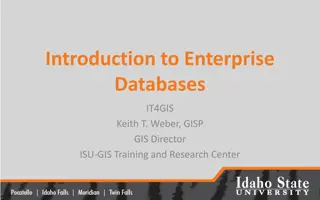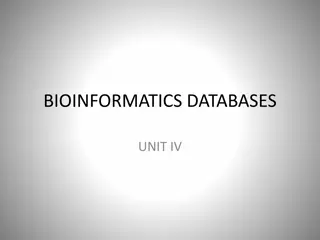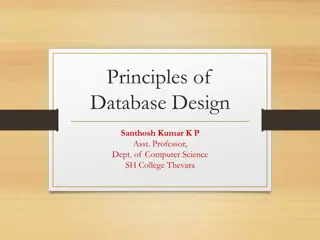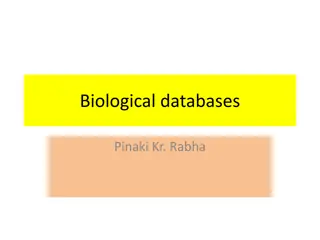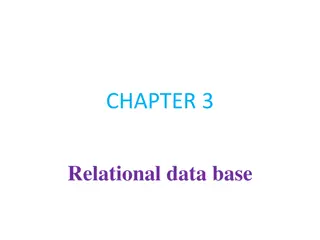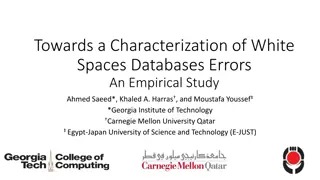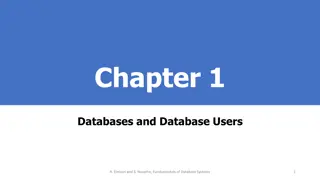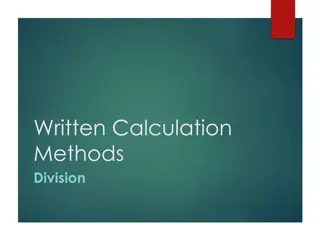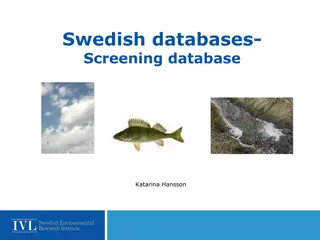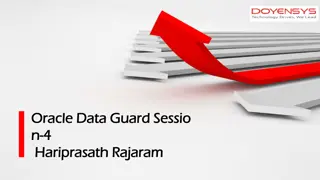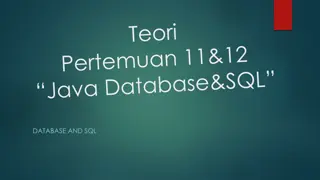The Evolution of Databases: Facts, Methods, History, and Features
Data plays a crucial role in the modern world, storing information about real-world facts. Explore the methods to store data, the history of database development, and the key features of databases, including data independence and integrity. Learn about relational databases, SQL, and the importance of Database Management Systems (DBMS) in organizing data efficiently.
Download Presentation

Please find below an Image/Link to download the presentation.
The content on the website is provided AS IS for your information and personal use only. It may not be sold, licensed, or shared on other websites without obtaining consent from the author.If you encounter any issues during the download, it is possible that the publisher has removed the file from their server.
You are allowed to download the files provided on this website for personal or commercial use, subject to the condition that they are used lawfully. All files are the property of their respective owners.
The content on the website is provided AS IS for your information and personal use only. It may not be sold, licensed, or shared on other websites without obtaining consent from the author.
E N D
Presentation Transcript
The development of database Tianhao Tao Yiwen Liu
What is data Data is information about facts in real world
Methods to store data Catalog card Files
History of database Computerized database started CODASYL IMS Structured Query Language, became the standard query language NoSQL and NewSQL 1960s 1990s 2000s 1970s 1980s E.F. Codd A Relational Model of Data for Large Shared Data Banks Object-Oriented Database
Features of database Data Independence Metadata Data Insulation Concurrency Data Security Data Integrity
Relational Database Relation/Table/File Attribute/Row/Record Tuple/Column/Field Schema Primary Key Foreign Key
Structured Query Language(SQL) data manipulation language (DML) data definition language(DDL) data control language (DCL) data query language (DQL)
Conclusion Database is an organised collection of data, also refers to the Database Management System(DBMS) Relational model is the most popular database model. SQL is the language used on relational database management systems.



